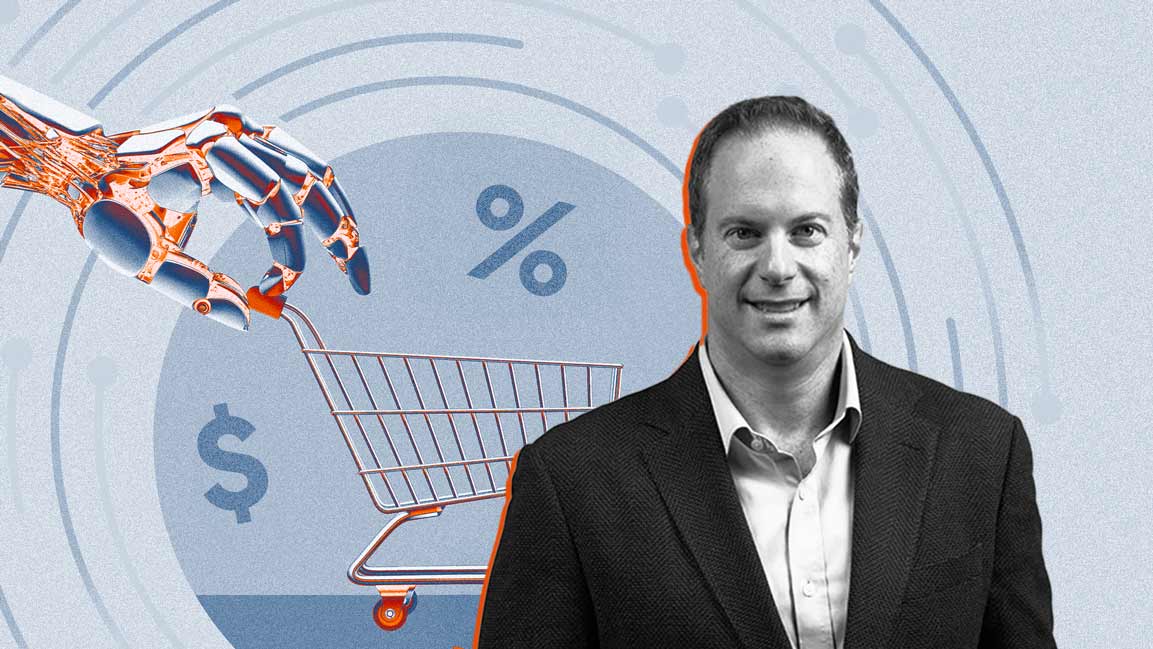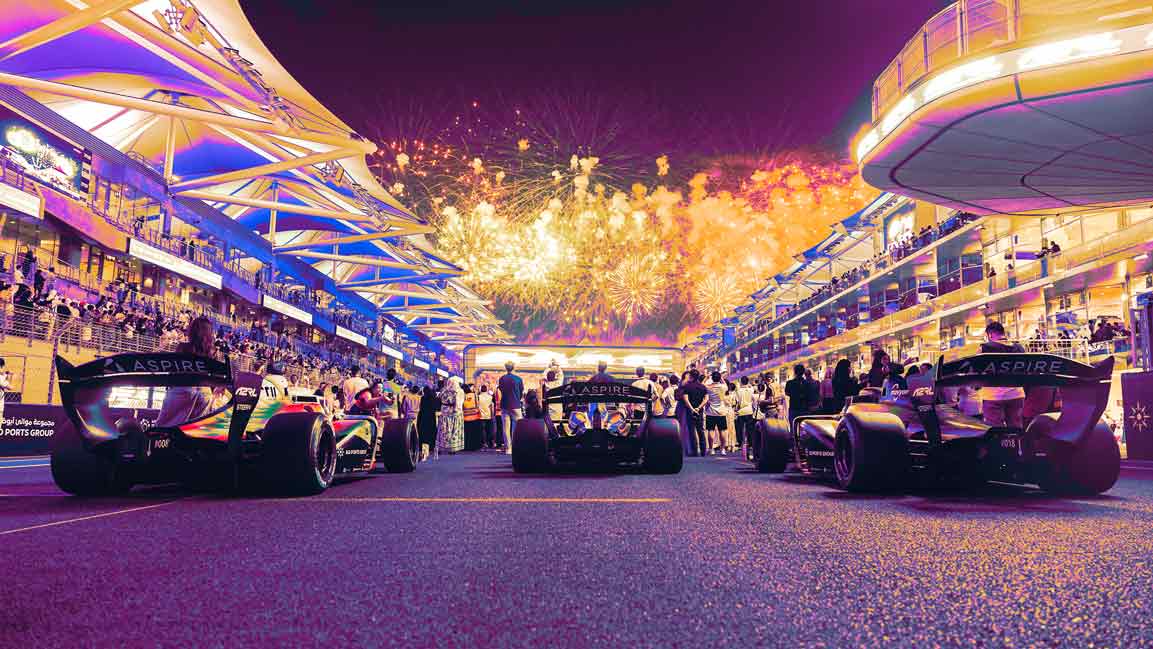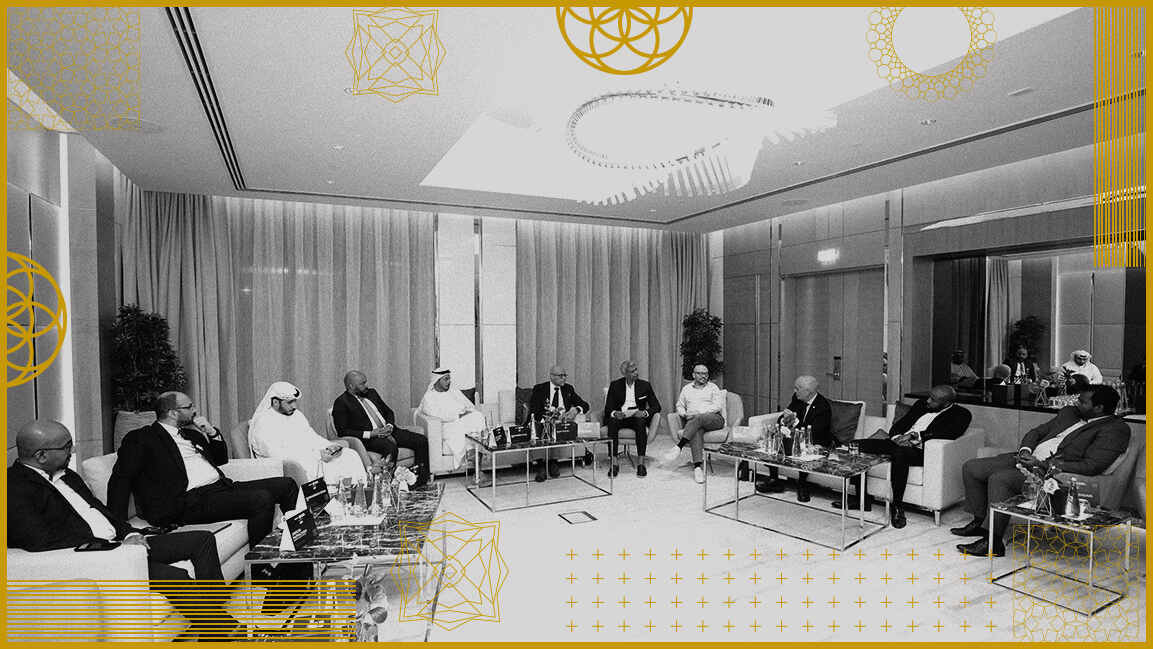- | Visa
Journeys Unpacked: Harrods & Visa – Redefining luxury in a new era of brand experience
The latest episode of Journeys Unpacked, powered by Visa, explores how Harrods continues to redefine luxury retail by blending heritage with innovation to deliver an unmatched customer experience.

For 175 years, Harrods—synonymous with luxury—has maintained its status as the world’s premier retail destination. From its renowned building in Knightsbridge to its exclusive and rare products, Harrods has set the bar for experiential luxury. The immersive and transformational experience of shopping within its grand halls, alongside exceptional customer service, continues to captivate visitors and ensure every visit feels like an event.
In the seventh episode of Journeys Unpacked, powered by Visa, the series travels to London’s Knightsbridge. Guest speaker Alex Unitt, Partnerships Director at Harrods, joins Dr. Saeeda Jaffar, Senior Vice President & Group Country Manager—GCC at Visa, to explore what makes Harrods a timeless icon in luxury retail and how the retail industry evolves in response to shifting consumer behaviors and expectations.
WATCH THE FULL VIDEO
THE SHIFT IN LUXURY RETAIL
Luxury retail is undergoing a significant transformation driven by evolving consumer demographics and expectations. Traditionally, Harrods saw a balanced split in its customer base, with key markets coming from China, the GCC, the US, the UK, Europe, and beyond. However, the global pandemic disrupted this balance.
“The Chinese consumer shifted and changed, and we haven’t seen the return of that.” While some may view this as a setback, he says, “We can use it to say, how do we do things differently?”
Recent stats indicate that younger generations, particularly Gen Z, are becoming an increasingly significant force in luxury shopping. These digital-savvy consumers have different expectations from the brands they engage with and are also driving a shift towards digital commerce. This is a global trend, with younger buyers seeking convenience, personalization, and immersive online experiences.
Dr. Jaffar says, “Where a lot of shoppers are coming from is changing, and who the shoppers are—particularly Gen Z—are showing up. Interestingly, wherever we’ve seen this phenomenon in other parts of the world, we see a distinct move toward digital commerce.”
Adapting to this new luxury landscape requires agility, innovation, and an awareness of how digital experiences can cater to the latest wave of luxury shoppers. The challenge now is for retailers like Harrods to remain forward-thinking and ensure they stay ahead of the curve in a rapidly evolving market.
“Younger demographics are coming to luxury and have different expectations. You must be versatile, agile, and constantly forward-thinking to continue playing in that luxury market,” Unitt says.
Dr. Jaffar then steers the discussion toward the GCC, a market with an appetite and ability to steer the luxury retail segment.
Unitt explains that the relationship with the GCC consumer has become more dynamic, moving beyond just a product exchange to a deeper, two-way conversation with luxury brands. The region’s influence on trends is evident, with local dynamics shaping global brands’ offerings. A recent example of this is Harrods’ partnership with Visa to introduce a co-branded credit card program tailored to customers in Qatar and Kuwait. This collaboration strengthens the connection with customers in the GCC, offering an enhanced rewards experience that reflects the excellence and personal service synonymous with Harrods.
It’s not just about products but the overall experience. “Luxury is becoming a lifestyle proposition,” Unitt says. “You need to deliver more than just a boutique within a store. It’s about the holistic experience.”
HARRODS’ APPROACH TO CUSTOMER LOYALTY
While e-commerce offers convenience and accessibility, in-person experiences still hold a unique allure, particularly for high-end brands like Harrods. Shoppers expect seamless digital engagement and memorable, tactile experiences that only physical stores can provide. Balancing these two realms has become crucial for maintaining customer loyalty and delivering a truly exceptional luxury retail experience.
“We sit here in a million square feet of retail space, and we know that our building is an icon,” Unitt says. “Our shoppers and non-shoppers globally recognize our building, space, and brand.”
While Harrods embraces omnichannel strategies, including an e-commerce site and mobile platforms, Unitt emphasizes
“Our strength is in how we deliver physical retail.”
“The true heart of Harrods, where we get customer loyalty, is when they’re here in Knightsbridge.”
UNDERSTANDING THE GCC MARKET
GCC shoppers have long been a driving force in the global luxury market, with their demand for high-end products and exclusive experiences showing no signs of slowing down. The region’s consumers are not only significant in terms of spending power but are also known for their discerning tastes and preference for craftsmanship, authenticity, and rarity in luxury goods.
GCC countries like the UAE, Saudi Arabia, and Qatar account for a large share of the global luxury market. According to Bain & Company’s Luxury Goods Worldwide Market Study, the GCC region is expected to make up about 8-10% of global luxury sales by 2025. Saudi Arabia and the UAE are two of the top 10 luxury markets globally. The purchasing power of GCC consumers is particularly evident during peak seasons, such as the summer months, when they flock to international shopping destinations like London, Paris, and Milan, further cementing the region’s importance in the luxury retail landscape.
Luxury shoppers from the GCC are increasingly focused on exclusivity. A survey by McKinsey & Company found that 60% of luxury buyers in the GCC are specifically looking for rare and limited-edition items. This desire for one-of-a-kind products aligns with the increasing demand for high-touch services, including private shopping, personalized recommendations, and bespoke experiences—attributes that high-end retailers like Harrods are keen to provide.
According to Unitt, the GCC market is “nuanced between the different markets that operate” within the region. Customers from countries like Kuwait, Qatar, Saudi Arabia, and the UAE bring distinct preferences to Harrods yet share a growing sophistication in luxury shopping.
“The GCC customer base is much more knowledgeable now in terms of luxury,” Unitt says. “Luxury has had its cut-through moment. There’s a real focus on craftsmanship, authenticity.” With this demand for exclusivity, Harrods delivers products and experiences that are truly one-of-a-kind, he explains.
“One of our pillars is offering products and services that are once in a lifetime—you can only get them here at Harrods,” he adds. “The GCC customer base leans into that.”
However, there has been a shift in the GCC customer behavior. “What’s interesting is we see that travel patterns flatten slightly. We used to have these huge peaks in the summer months, but now it’s more of an ongoing relationship.” While demand for luxury goods remains high, there is an increasing year-round connection with Harrods, driven not only by exclusive products but also by the luxury services offered, such as private shopping and fine dining.
“The market is maturing,” Unitt adds.
Agreeing with him, Dr. Jaffar notes that while the GCC shopper’s appreciation for luxury has matured, so have the options available to these customers. “There is now more competition than ever for their attention and spending,” she says.
She then asks how Harrods ensures a unique proposition to build lasting loyalty with its customer base.
“We’re lucky in many ways that we were quite early to market with our rewards scheme,” says Unitt, highlighting how Harrods customer loyalty program has been a foundational part of their approach to engaging shoppers. The Harrods Rewards program allows customers to redeem points without restrictions, fostering ongoing interaction with the brand.
Beyond the Rewards program, Unitt emphasizes maintaining strong brand equity. “There’s a brand equity we can’t take for granted, which, as long as you foster and look after that and maintain it at its peak, you can retain some of that loyalty,” he says. The iconic location and its appeal to global shoppers are also part of the equation, offering a tangible, physical connection to the brand that strengthens customer loyalty.
However, Unitt underscores that loyalty is not just about rewards or brand recognition. “It’s a combination of the loyalty scheme, the brand equity, and the experience people have when they walk through the doors,” he says.
The experience of luxury retail today goes beyond the product—it’s about creating an immersive environment that includes fine dining, exclusive services, and a curated lifestyle. “Luxury is becoming a lifestyle proposition,” he adds.
With the competitive landscape constantly shifting, Unitt remains confident in the strength of the brand’s approach. “As long as we hold to our values and the customer proposition on the back of that, we’ll continue to foster success,” he adds.
THE IMPACT OF GCC CUSTOMERS ON LUXURY TRENDS
Dr. Jaffar says, “The experiential aspect is critically important to your brand, and we see that consumers today are increasingly pushing toward experiential experiences rather than just customer-led experiences.” She adds that the established luxury brands’ ability to blend heritage and modern consumer expectations highlights the value of an experiential approach.
Unitt agrees, adding that with increasing digital engagement, luxury is moving beyond just the physical store, creating new ways for customers to interact with brands on their terms.
As for the GCC consumer, Unitt explains how the relationship between local markets and luxury brands has evolved. The influence of local events, like Ramadan and Eid, has led to tailored collections and a more interactive conversation between regional markets and luxury brands. “It’s a conversation now between local dynamics and luxury brands,” he adds.
Dr. Jaffar adds, “It’s good to see how local markets are influencing things happening here, acknowledging the broader impact of the GCC shopper on the luxury industry worldwide.
PAYMENT TRENDS: EVOLVING OPTIONS FOR A CUSTOMER
Convenience and luxury go hand in hand, and one of the ways this is reflected is in the seamless experience from the moment a customer enters the store to the point of payment.
Unitt acknowledges that payment trends have both evolved and remained fundamentally the same. “We look at the store and see over 3,000 brands; if you’re into luxury, you’re going to get pretty much anything you want here,” he says. With such a wide range of options, Harrods must ensure it offers a variety of payment methods to accommodate the diverse needs of its global customer base. “We have to provide many payment options for the consumer,” Unitt says. “Whatever the option, we want to do it seamlessly.”
To deliver greater customer choice, Harrods has partnered with Buy Now, Pay Later (BNPL) providers and integrated Visa and other payment solutions to cater to a global audience. “We’ve got people coming in from all over the world,” Unitt adds, underlining the importance of providing smooth, flexible payment options to meet the expectations of luxury consumers worldwide.
“We’re custodians of a brand which is 175 years old,” Unitt says, emphasizing the delicate balance between maintaining Harrods storied legacy and evolving with the demands of newer generations.
Harrods has embraced newer platforms and technologies, including launching on TikTok, to engage the Gen Z as the next generation of luxury shoppers. “We need to play into trends and that customer portfolio while maintaining traditional platforms,” Unitt adds. The brand has also worked with content creators to produce engaging, authentic material tailored to younger audiences.
Dr. Jaffar asks about the technologies shaping the future of retail, specifically the rise of agentic commerce, which offers personalized experiences for consumers. Unitt points to the importance of data, explaining, “You’ve got to see what we want to see with a personality and how that data set informs us.” He acknowledges that retail must balance data proliferation and maintaining a strong brand identity in the coming years.
As for the challenge of blending Harrods iconic in-person experience with the digital world, Dr. Jaffar raises a critical point: “How do we make sure that the experience provided keeps pace in a way that understands what the consumer is experiencing in their digital world?”
Unitt stresses the importance of creating a coherent and inspiring narrative for customers. “The question is how we are inspiring rather than generic.”
In conclusion, Dr. Jaffar draws a compelling parallel between digital influencers and Harrods as the ultimate “physical influencer,” underscoring how the brand has profoundly shaped in-store and beyond consumer behavior.
Journeys Unpacked is a series produced by Fast Company Middle East, in collaboration with digital payments leader Visa, to explore how technology, innovation, and digital payments are reshaping travel, hospitality, and digital commerce industries.








































